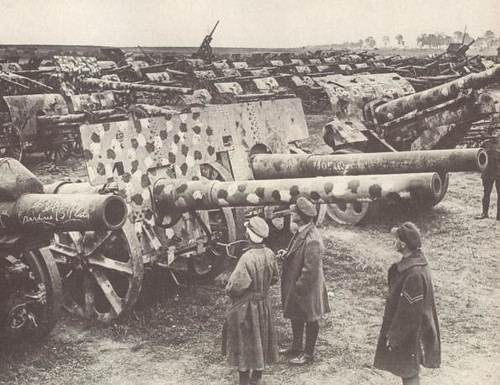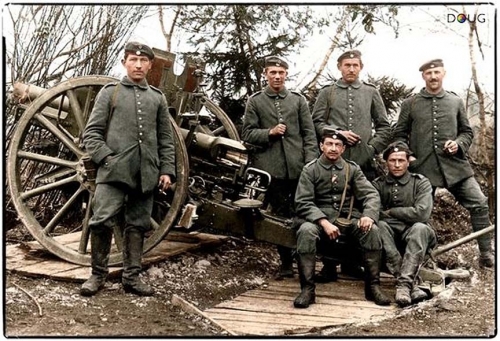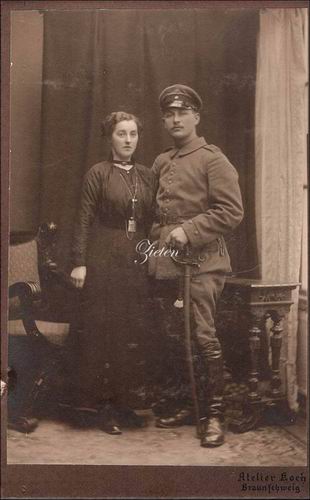WWI German Artillery Export/Auxiliary Sword
Aug 8, 2018 2:08:42 GMT
Post by Pino on Aug 8, 2018 2:08:42 GMT

A bit of History
Germany, like France or Great-Britain, enjoyed considerable military prestige that allowed its sword manufacturing industry to establish contracts with other nations who wanted to equip their armies with specific sword models.
The Chilean 1895, Argentine 1899 and Turkish 1909 are such examples yet in the first decade of the 20th cent. another sword was made that was allegedly to be exported to Romania and whose form reminds of a KD89 but with simplified hilt...then poo happened.
WWI broke loose and it seems that the contract was cancelled and the sword kept in German warehouses.
That is until they were called into service within chiefly Prussian but also some Saxon and Wurttemberg field-artillery units somewhere after 1915, at that point in time swords were already becoming useless but it seems someone thought they’d be cool to hang around with the artillerymen…well good for them!
Not only did they have the big guns but someone thought a nice sword wouldn't hurt.

Because of the context it was put into service German literature often calls this model the Aushilfs sabel aus dem WK 1 (Prussian WW1 auxiliary/temporary/interim sabre).

So yea the form is very similar to the KD89 sword as the pommel form, bakelite pistol shaped grip with 2 rivets and pipeback blade follow the same concept except that here the basket hilt has been changed to a simpler D-shaped guard and the blade is curved.
As with any other German weapon the fittings are stamped with the inspection marks and the Carl Eickhorn made blade + inspector mark on the back. The iron scabbard has a welded suspension ring and mouthpiece which is also flanked by two screws.

The interesting part is that this sword is that it is marked as most of them found on the market are scarcely marked at all; the unit where this specimen was sent is the F.A.R. 55. 555. which is 2nd Thüringisches Feldartillerie-Rgt Nr.55, HQ, weapon no 555 or it may be 5th battery, weapon no 55 but it is missing a dot.
I guess 5 was its lucky number.
Handling
I strongly believe this is one of my favorite models. It is an absolute joy to play with, balance and control is out-stan-ding. I guess that because of the minimalist guard it is not as clunky as other pipeback balded cavalry models such as the KD89 or the Argentina sword and as such handling is way better though the simple guard also means protection to the wrist is sacrificed.
Unlike some other contemporary models the point is pretty acute so I have little doubt of its efficiency for thrusts; the blade is curved just enough to perform good cuts. The size permits it to be used both on foot and on horse so it is a very strong candidate for all-purpose service.
All in all I would say it is a very very enjoyable sword; its not a lightweight sword but the whole construction, weight distribution and performance certainly brings you back to the concept of Hussar sabres.
Spex
total length: 38'' / 97cm
sword: 37'' / 94cm
blade: 31'' / 79cm
POB: 5'' / 13cm
Weight total: 1454gr / 3.2lbs
weight sword: 923gr / 2.05lbs
Regimental history

Raised on 25/03/1899, 55 field artillery rgt was part of the 38th field artillery brigade and, until 1916, under the 38 Infantry division which was part of ArmeeKorps XI. It was mainly part of the engagements in the Eastern front during the battles of Mansurian Lake, Lodz, Gorlice-Tarnów Offensive, but also on the Western front at Namur then later on at Verdun and then at the Somme. After 1917 it was transferred to 239 Inf. Div. where it saw action in the area of Champagne, Flanders and Artois untile the end of hostilities. Both divisions where the unit was involved were rated as above average, excellent quality.








